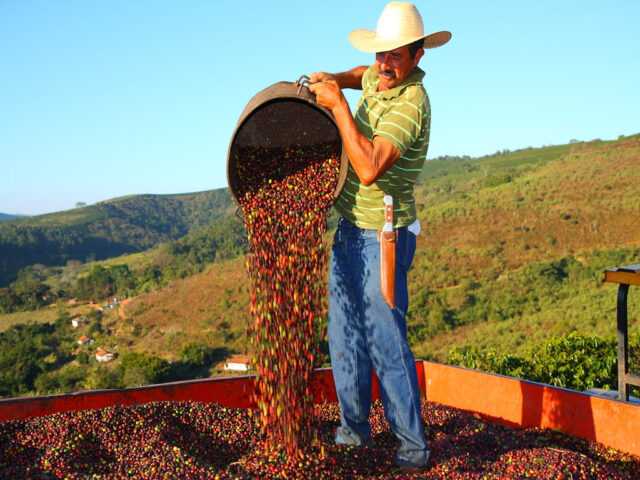SAO PAULO, Brazil — The harvesting of the 2019/20 coffee crop, which started in April, was slower than expected in May, mainly in arabica-producing regions, except for Garça (SP) and northwestern Paraná, where the volumes harvested accounted from 20 to 25% in both regions, says Cepea in its latest report.
In the remaining arabica-producing areas, fieldwork has not reached 5% yet, due to the weather, which is colder and rainy. While low temperatures delayed the maturation of the beans still green, precipitation hampered the entry of workers in the field.
Rains also knocked down a significant amount of beans, mainly in the Cerrado Mineiro and southern Minas Gerais. Besides, precipitation hit the beans already harvested and placed at coffee drying yards, increasing the concerns about beverage quality and the aspect of the next batches still to arrive at the market.
As for robusta, the harvesting was stepping up in May. In Rondônia, Cepea collaborators indicate that from 30 to 50% of all the volume expected had been harvested, and in Espírito Santo, from 15 to 30%. According to agents, so far, quality and yield of the new robusta trees are considered satisfactory.
In May, the USDA released the first estimates for the 2019/20 Brazilian crop, predicting the output at 59.3 million bags of 60 kilos, 8.5% down compared to that from 2018/19, but still high for a negative biennial cycle.
The volume forecast by the USDA is 8.3 million bags larger than that estimated by Conab (National Company for Food Supply), at 50.92 million 60-kilo bags of processed coffee beans (arabica and robusta). Cepea collaborators believe the Brazilian production will total from 50 to 55 million bags.
Brazilian Market
The domestic arabica prices increased in May, boosted by the slow harvesting pace and the valuation of arabica futures. The higher price levels attracted sellers to the market, increasing liquidity in Brazil.
On May 31, the CEPEA/ESALQ Index for arabica coffee type 6 (delivered in São Paulo) closed at 417.80 BRL (106.42 USD) per 60-kilo bag, 8% up compared to that on April 30.
Concerning robusta, domestic quotes were influenced by international price rises too. Growers were away from the market, despite the fast harvesting pace, while purchasers were more active. Still, large volumes were traded.
The CEPEA/ESALQ Index for the robusta type 6, screen 13, Espírito Santo State, closed at 299.33 BRL (76.24 USD) per 60-kilo bag on May 31, 5.3% up, in the same comparison.
Trades
With the faster trading pace in the Brazilian spot market in May, agents reported a decrease in the coffee volume remaining from the 2018/19 season.
According to Cepea surveys, in April (until April 18), trades of the 2018/19 crop ranged from 70 to 90% of the total volume produced, while in May (until May 24), this volume accounted from 80 to 95%.















